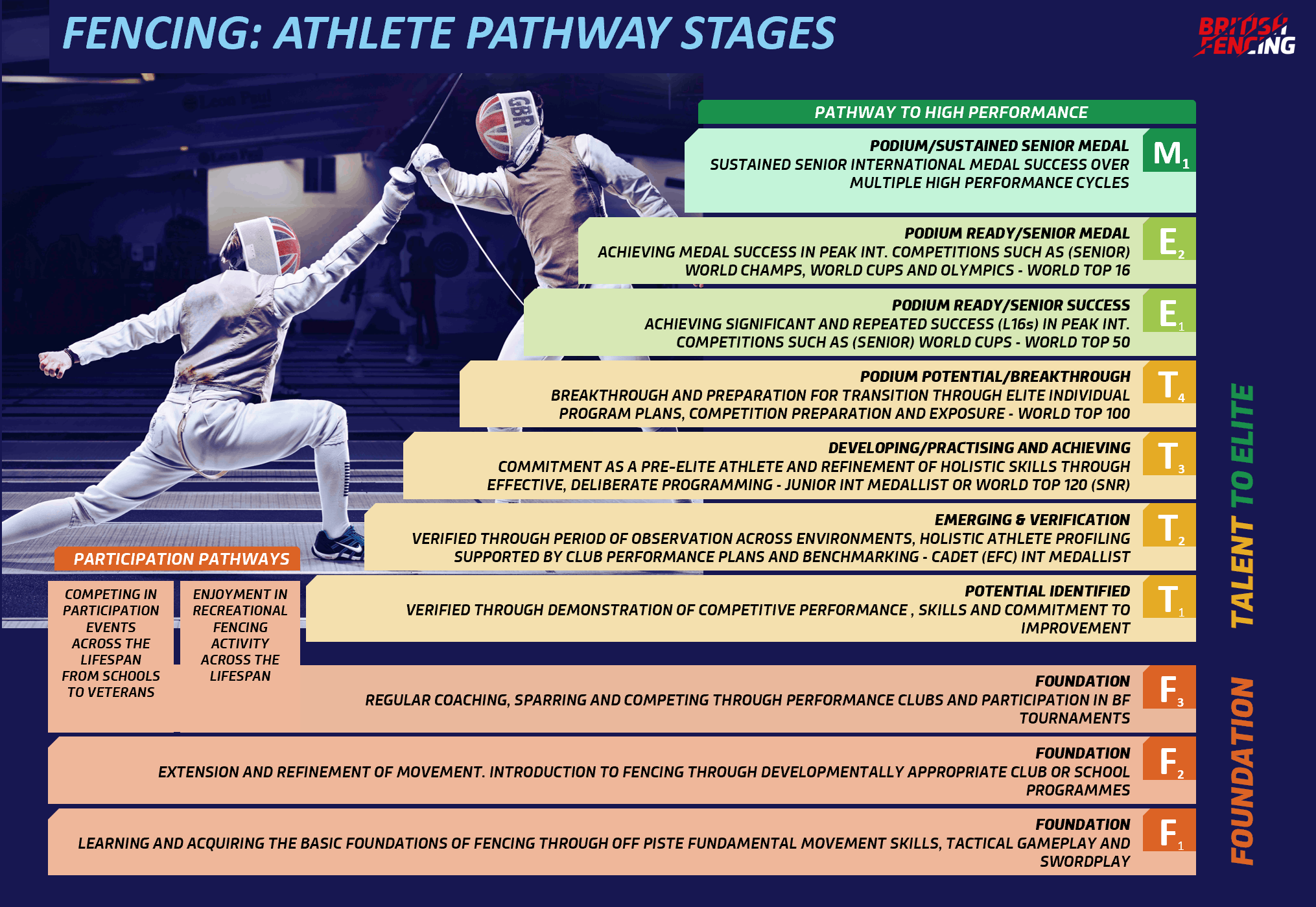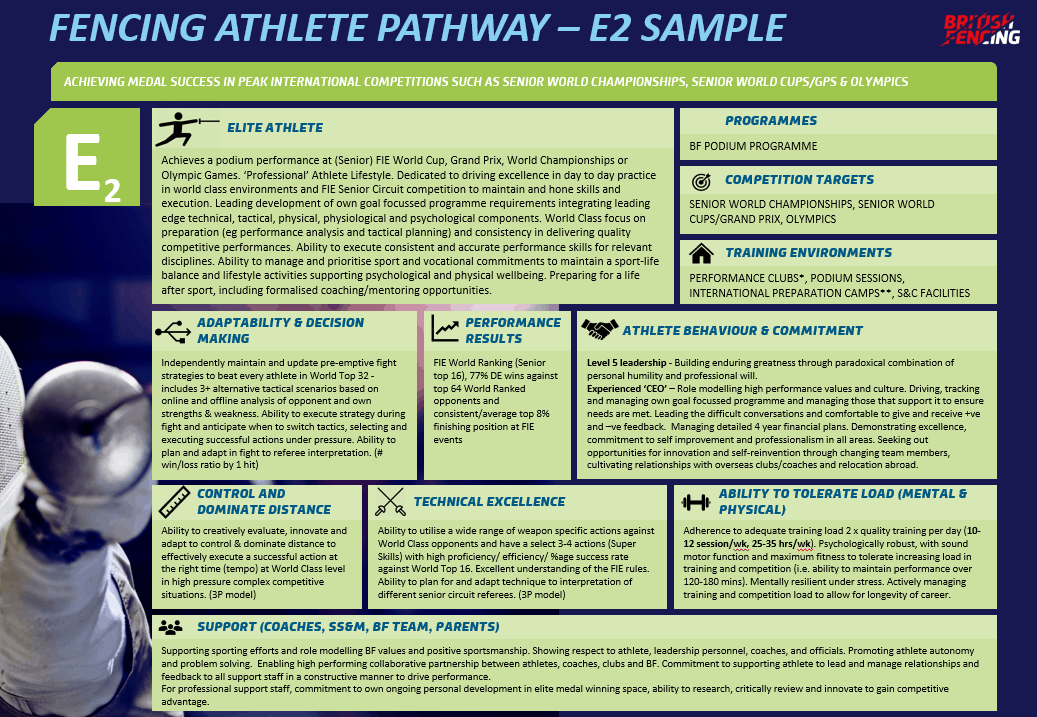

The Athlete Pathway Stages are based on the FTEM Framework.
The Performance Pathway Stages are those from T1 to M1 which describe the journey from Pre-Elite (T1 to T3), to Breakthrough Elite (T4) to Elite (E1, E2) and ultimately Mastery (M1).
T1 – Potential Identified – Verified through demonstration of competitive performance, skills and commitment to improvement. Domestic Ranking (Cadet/Junior/Senior) Top 15.
T2 – Emerging and Verification – Verified through period of observation across environments, holistic athlete profiling supported by club performance plans and benchmarking – Cadet International Medallist
T3 – Developing/Practising and Achieving – Commitment as a Pre-Elite Athlete and refinement of holistic skills through effective, deliberate programming – Junior International Medallist or Senior World Ranked 120
T4 – Podium Potential/Breakthrough – Breakthrough and preparation for transition through Elite Individual Program Plans, Competition Preparation and Exposure – Senior World Ranked Top 100
E1 – Podium Ready/Senior Success – Achieving significant and repeated success in peak international competitions such as Senior Grand Prix/World Cups – Senior World Ranked Top 50
E2 – Podium Ready/Senior Medal Achieving medal success in peak international competitions such as Olympics, Senior World Champs, Grand Prix/World Cups – Senior World Ranked Top 16
M1 – Podium/Sustained Medal – Sustained Senior International Medal Success over multiple High Performance Cycles

Each stage is defined using a number of Pathway Stage Components to describe the expectations of an athlete in that stage.
For a full description of these components please click here.
It is important to note that in aligning athletes to stages:
Stage Description – T1-E2 Click Here

Return to the Pathway Zone to find out more about the Athlete Development Pathway.
Return to ‘The ADP Zone‘ to find out more information about the work that we do.

Sign up to receive regular highlights from the exciting world of fencing - celebrating the best of our unique and inspiring community